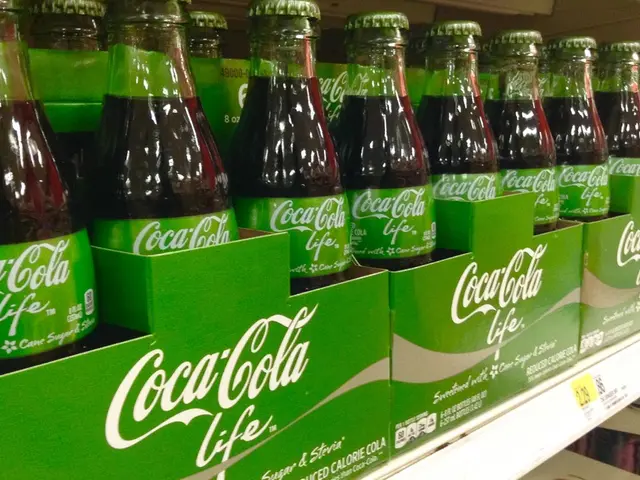Rising debt levels prompt a surge in credit card usage among consumers
Headline: Subprime Borrowers' Share of Credit Card Debt Surpasses Pre-Pandemic Levels
In a troubling turn of events, subprime borrowers' share of credit card debt has surpassed pre-pandemic levels, according to recent data. This surge, which began in 2025, can be attributed to a combination of factors, including the end of pandemic-related financial relief measures, a broader increase in consumer debt, and mounting financial strain among subprime borrowers.
End of Pandemic Stimulus and Relief
During the pandemic, subprime borrowers benefited from stimulus payments, reduced discretionary spending, and a suspension of student loan payments. These factors helped lower their share of total credit card debt from 20.5% in January 2020 to 14.7% by May 2021. However, the expiration of these relief measures by 2025, particularly the end of the student loan payment pause, has resulted in increased financial pressure for subprime borrowers.
Rising Consumer Debt and Spending
Overall U.S. consumer debt grew by 2% year-over-year to $17.86 trillion in June 2025. While most consumers continued spending across categories and maintained stable delinquency rates, subprime borrowers showed a "K-shaped" split, facing growing financial stress and increased reliance on credit cards. This growth in subprime bankcard debt far outpaced the overall increase in consumer bankcard debt during the same period.
Increasing Delinquencies and Strain
Despite flat overall consumer delinquency rates, subprime borrowers experienced the worst surge in delinquencies in years. The resumption of reporting on student loan delinquencies in 2025 also contributed to increased strain among subprime and prime borrowers alike. Rising defaults and financial stress have contributed to the subprime segment’s growing share of debt as they increasingly rely on credit cards to manage expenses.
The surge past pre-pandemic levels reflects the combined effects of the withdrawal of pandemic-era financial relief, increased borrowing to cope with constrained finances, and rising delinquencies, all disproportionately impacting subprime borrowers. This trend underscores widening economic disparities in the post-pandemic recovery.
Key Figures
- Subprime borrowers' share of bankcard debt increased by 50.9% from its May 2021 low.
- Student loan debt stood at $1.33 trillion in June, a 11% decrease from a year earlier.
- Subprime borrowers held 22.1% of all bankcard debt in May 2025, a 3.5 percentage point increase over the past year.
- The total dollar amount of subprime bankcard debt has increased by 135% since 2021, reaching $233.1 billion.
- The overall delinquency rate on consumer debt remained flat at 1.5% in June.
- Severe delinquency rates for student loans spiked sharply, reaching 17.95% in June, up from 6.48% in March.
- Subprime bankcard debt's share of total bankcard debt is now 27.9%, a 7.8% increase from its pre-pandemic level in January 2020.
- Total U.S. consumer debt reached $17.86 trillion in June 2025.
Expert Opinion
Tom O'Neill, Market Pulse advisor at Equifax, noted that consumers are continuing to spend and avoid delinquency. However, the increase in subprime borrowers' share of bankcard debt is a concerning trend, according to Equifax's data.
This trend highlights the need for continued monitoring and potential policy interventions to support vulnerable subprime borrowers and prevent further widening of economic disparities in the post-pandemic recovery.
In the post-pandemic recovery, subprime borrowers are facing increased financial pressure due to the expiration of financial relief measures, resulting in a surge in their share of credit card debt that surpasses pre-pandemic levels. This trend necessitates continued monitoring and potential policy interventions to support vulnerable subprime borrowers, especially in the realm of personal-finance and business.
In the wake of the end of pandemic-relief measures and the resumption of student loan payments, the increased financial pressure on subprime borrowers has contributed to a growth in their reliance on credit cards for managing expenses, prompting concerns about investing in the finance sector, particularly for those grappling with personal-finance issues.





